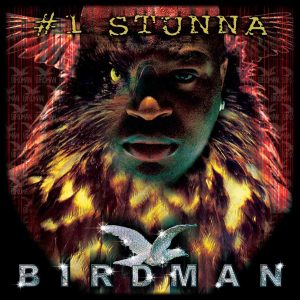Tenor saxophonist Stan Getz’s remarkable November 26, 1961 concert at New York’s Village Gate venue lay forgotten in the vaults for 58 years before Verve Records unveiled it in June 2019, as Getz At The Gate.
1961 was a watershed year for Stan Getz. After being exiled to Denmark for three years, he decided to return to the US. It was a decision largely brought about by a wane in popularity at home that saw him slip, after a decade at the top, to second place behind rising star John Coltrane in DownBeat magazine’s annual poll for best tenor saxophonist. Arriving back in America on January 19, 1961, Getz sought to re-establish himself, but initially struggled to get many bookings. With the help of a new manager, however, Jack Whittemore (who, ironically also looked after John Coltrane’s interests), the Philadelphia-born saxophonist’s career, both on stage and in the studio, began to flourish again on American soil.
Listen to Getz At The Gate on Apple Music and Spotify.
New heights of expression
When Getz took to the stage at New York’s Village Gate venue on Sunday, November 26, 1961, he had just finished up one of his most famous albums, Focus, recorded for Verve Records under the aegis of rising jazz producer Creed Taylor. The rhythm section on the date comprised Getz’s then-working band: pianist Steve Kuhn, bassist John Neves, and drummer Roy Haynes. Kuhn had previously worked with Coltrane (deputizing for McCoy Tyner) while the in-demand Haynes had played with Getz many times before, beginning in the early 50s.
As the 3LP/2CD set Getz At The Gate shows in vivid detail, the group (nicknamed “The Boston Quartet”) had quickly become a slick, well-oiled machine with its rhythm section pushing Getz to new heights of expression that revealed a sense of drive, dynamism, and aggression that had hitherto been absent from his music. Though noted for his light, feathery tone – which helped to give Getz his nickname, “The Sound” – there’s a harder tone in his delivery on the Village Gate performance.
Molten saxophone improvisation
The two-hour 20-minute concert begins with a blistering version of the jazz standard “It’s Alright With Me,” which is Getz’s only known recording of a famous Cole Porter tune recorded by Ella Fitzgerald and Frank Sinatra. Driven by Haynes’ busy but at times almost delicate drums and Neves’ speed-walking bassline, Getz showed that he was a supreme melodist whose improvisations could be as inventive as those of fellow tenorist Sonny Rollins.
As with “It’s Alright With Me,” the Village Gate performance of “Yesterday’s Gardenias” – a song associated with Glen Miller – is Getz’s only known recording of that particular tune. Getz’s horn exudes an exquisite fluttering quality as it flits over a lightly-swinging rhythmic backdrop.
In sharp contrast, “When The Sun Comes Out” – a languorous slow number highlighting Getz’s lyricism – the upbeat “Like Someone In Love” and the mellow ballad “Spring Can Really Hang You Up The Most” were staples in the saxophonist’s repertoire, which he delivers with his customary aplomb.
Other highlights include Getz’s high-speed reconfiguration of Sonny Rollins’ 50s hard bop chestnut “Airegin,” which is characterized by molten saxophone improvisations over a swirling rhythm. Getz is in magnificent form also on a jet-propelled 14-minute version of Thelonious Monk’s “52nd Street Theme,” which again highlights the pulsating work of bassist Neves and drummer Haynes (the latter also plays a long but engaging drum solo on the track).
The Village Gate concert takes a really interesting turn when Getz offers up a 12-minute version of “Impressions,” one of John Coltrane’s signature modal tunes. Sadly, though, the saxophonist takes a breather on this one, allowing Kuhn, Neves, and Haynes a chance to shine in the spotlight.
A transitional phase
The fact that Getz At The Gate was professionally recorded by Verve Records indicates that it was being considered for release back in 1961, but, for reasons that we’ll never know, the project was shelved.
As well as offering a scintillating performance by a dynamic and energized Stan Getz Quartet, Getz At The Gate is a precious artifact that shows the saxophonist in a transitional phase and reaching a crossroads in his career. But instead of moving forward and pushing the jazz envelope like his rival and friend John Coltrane, ten weeks after Getz At The Gate was recorded, the saxophonist chanced upon another musical direction: Brazilian bossa nova. That was when he collaborated with Charlie Byrd to make the Jazz Samba album, which in turn led to the Getz/Gilberto collaboration that spawned the Grammy-winning hit “The Girl From Ipanema.”
Those records found Getz an audience outside of jazz and changed the whole trajectory of his career, but recordings like Getz At The Gate remind us that, first and foremost, Stan Getz was a brilliant jazz musician who could create a special kind of improvisational magic on the bandstand.




